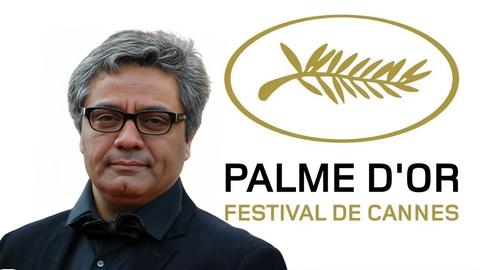Abbas Kiarostami, Iran’s best-known filmmaker, died on July 4. He was 76.
In recent months, Kiarostami had undergone a series of surgeries.
Kiarostami won some of the top honors in cinema. He received the Palme d’Or for Taste of Cherry at the 1997 Cannes Film Festival.
He also received acclaim from cinematic giants including Martin Scorsese, Jean-Luc Godard and the late Akira Kurosawa.
His admirers -- especially those in Iran -- also knew him as a painter, a photographer, and a poet.
Kiarostami was born in Tehran in 1940. He trained in painting and graphic design at Tehran University’s College of Fine Arts.
He began his film career in this early 30s.
Among his early successes were The Traveler (1974), about a boy who lies and cheats to raise money so he can attend a soccer match, and The Report (1977), about a civil servant’s crumbling marriage.
Following the Islamic Revolution of 1979, Kiarostami stayed in Iran and built a successful career.
He viewed Iran as central to his work. "When you take a tree that is rooted in the ground,” he once said, “and transfer it from one place to another, the tree will no longer bear fruit. And if it does, the fruit will not be as good as it was in its original place.”
He made Koker, a remote village in northern Iran, part of cinematic history by featuring it in three films, Where is the Friend’s Home (1987), And Life Goes On (1992) and Through the Olive Trees (1994).
Kiarostami built a reputation for casting non-professional actors in reality-based scenarios, as in his acclaimed 1990 feature, Close-Up, which was part fiction, part documentary. The film told the story of a man who impersonated another famous Iranian filmmaker, Mohsen Makhmalbaf.
Kiarostami’s love of banality and glacial pacing exasperated some critics. The Chicago Sun-Times’ Roger Ebert famously remarked of Taste of Cherry — a sedate tale about a man who meets a series of people as he drives around the dusty hills of Tehran planning his own suicide — “I thought I had seen an emperor without any clothes.”
But Ebert stood against the currents of praise pouring from other critics. Jonathan Rosenbaum, then of the Chicago Reader, called the same film “powerful and life-enhancing.” David Kehr of the New York Daily News called it a masterpiece.
Through Taste of Cherry and later film, Ten (2002) Kiarostami pioneered a subgenre of “automotive cinema,” or movies shot almost entirely in cars.
Kiarostami’s films seldom touched politics directly, but most of his later films are banned in the Islamic Republic.
In recent years, he experimented with filming in other countries, shooting Certified Copy (2010) in Italy, and Like Someone in Love (2012) in Japan.
"Kiarostami was one of the greatest innovators in film history," film historian Mark Cousins told IranWire. "Though his work was less showy than Orson Welles or Andrei Tarkovsky, it was as significant for the art form as either. His Koker trilogy -- Where is the Friend's House, And Life Goes On and Through the Olive Trees -- is cinema's greatest investigation into the moment."
"Kiarostami was a master of interruption and reduction in cinema,” says Iranian film critic Ehsan Khoshbakht. “He did everything with subtlety. He diverted cinema from its course more than once. From his experimental children’s films to deconstructing the meaning of documentary and fiction, to digital experimentation, every move brought him new admirers and cost him some of his old ones. Kiarostami provided a style, a film language, with a valid grammar of its own.”
Kiarostami brought Iranian faces and locations to screens across the world throughout periods of great political tension between Iran, its neighbors, and the West. But his films transcended even the deepest political divides.
Eldad Pardo, a lecturer in Middle East Studies at the Hebrew University of Jerusalem and author of Projecting Revolutions, is another admirer. “Kiarostami was one of those pre-revolutionary directors who actually built the younger generation of Iranian filmmakers,” he says. “He took Iranian cinema to unparalleled international fame in the 1990s. His film Ten was a great success in Israel. He was a great artist for all humanity.”
Mania Akbari, one of the stars and/or protagonists of Ten, recalls Kiarostami’s singular vision with awe. “When we met, I was not hunting for a new language of cinema. I was looking for a new and different perspective on life, which I found in Abbas. I did not act in Ten. Rather I lived for two years with Abbas's inner world, with his sensitivity and curiosity about everything around him. While his huge influence on cinema around the world is undeniable, I learned more from his view of life than from his view of cinema.”
One of Kiarostami's final projects 24 Frames will be shown in a major museum, most probably, in 2017.
This article was updated with additional quotations on July 6, 2016.
visit the accountability section
In this section of Iran Wire, you can contact the officials and launch your campaign for various problems




























comments